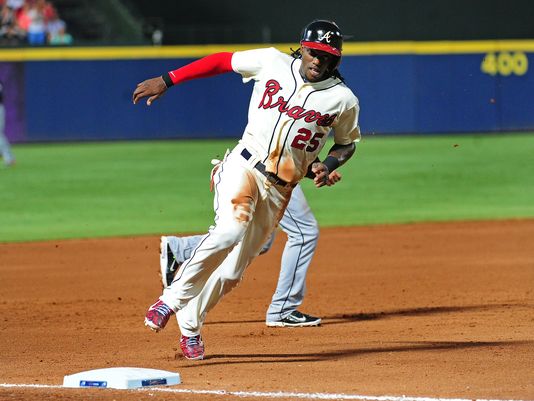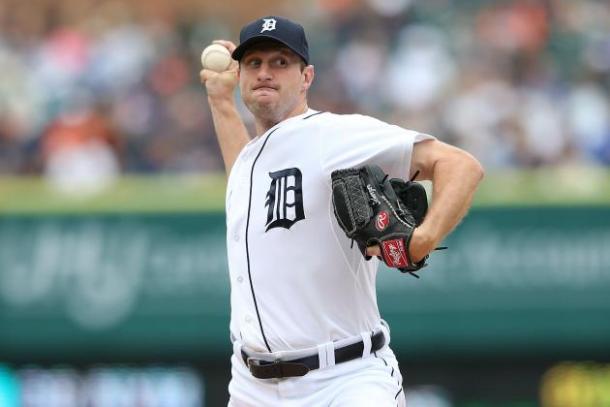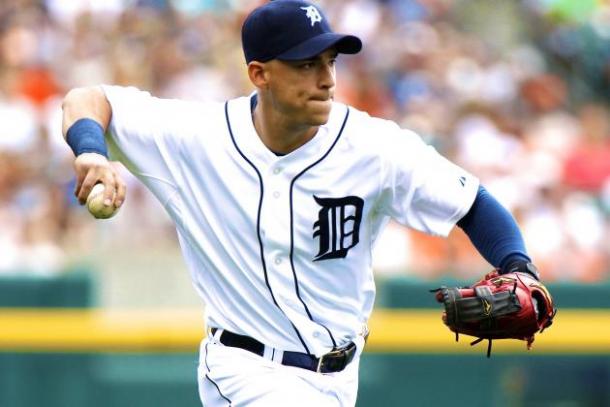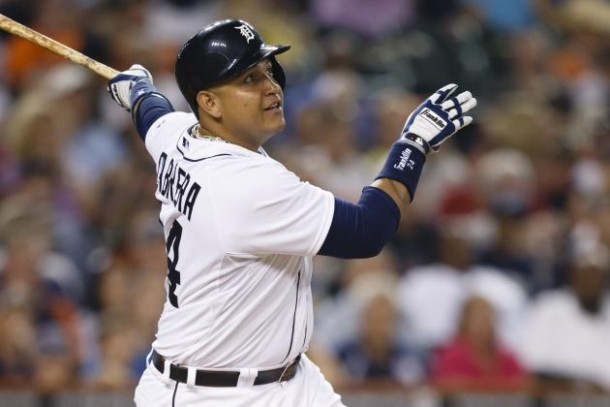Much has happened for the Detroit Tigers in the last decade. The team has risen from a perennial loser and laughingstock of the league to a constant contender. Since the beginning of 2005, Detroit has been to the playoffs five times.
Also since that time, the Tigers have been to a pair of World Series and four American League Championship Series. Team players and staff have also taken home three MVP trophies, two Cy Young awards, two Triple Crowns (one pitching, one hitting), a Rookie of the Year trophy and a Manager of the Year honor. Not bad for a team that, until that point, had previously finished only one season with a winning record since 1990.
Last season aside, it’s hard to ignore the Tigers’ achievements of the past decade.
One reason for the team’s rise was an ever-growing payroll that allowed the front office to hand out substantial contracts. However, an equally important aspect in the Tigers’ success was the number of shrewd trades former general manager Dave Dombrowski made during his tenure in Motown. Dombrowski managed to bring in a bevy of impact players that greatly helped the team. Some of those players are still catalysts on the current roster.
Coincidentally, the team’s best trade of the last decade came (at least chronologically) first.
The Trade: The Tigers Acquire Miguel Cabrera and Dontrelle Willis from the Marlins for Andrew Miller, Burke Badenhop, Cameron Maybin, Mike Rabelo, Dallas Trahern and Frankie De La Cruz
The Date: December 4th, 2007
This is one of the most lopsided trades in the history of baseball, but it’s worth noting just how one-sided the deal was.
Since coming over from the Marlins, Cabrera has become the game’s best and most complete hitter. In eight seasons in Detroit, the future-Hall-of-Famer has mashed 270 home runs and driven in 922 RBI. He’s also hit .326. During his time in Motown, the first baseman has amassed a staggering 46.5 WAR.
Cabrera’s dominance at the dish is even more outstanding considering the Tigers were the lopsided winners of the deal despite acquiring Willis. The starting pitcher posted a -1.2 WAR and a 6.86 ERA in 101 innings for Detroit. Willis also did all this while moonlighting as a contractual albatross. In other words, the Tigers won the trade despite Willis’ struggles.
While Cabrera was a stalwart for Detroit, the performance of the six players traded to the Marlins was more on par with Willis’ track record.
Going the Other Way
As one of the centerpieces of the deal, Miller has achieved the most success of the departing group. However, very little of it occurred in a Marlins’ uniform. The former starting pitcher spent three seasons in Florida, posting a 5.89 ERA in 220 innings. His WAR was -2.4. While Miller is an impact player today, his role is that of a closer and not a starter. He didn’t pan out as a starter with the Marlins.
Maybin was also one of the centerpieces of the deal. The centerfielder has always brought great promise, but hasn’t been able to piece things together. Maybin’s most productive year came last season when he hit 10 home runs, stole 23 bases and drove in 59 runs while posting a .267 batting average. All told, Maybin had a 1.4 WAR in parts of three seasons with the Marlins.

Of all the other players the Marlins received in the deal, only Badenhop made any kind of an impact at the big-league level. Trahern never made it past Triple-A, while De La Cruz only managed 32 major-league innings (and an 8.16 ERA) with four different franchises. Rabelo appeared in 34 games for the Fish in 2008, he hit .202 and never made another team’s 25-man roster.
Badenhop posted a 1.9 WAR in four seasons for Florida. The reliever was particularly effective from 2009 to 2011 when put up a 3.94 ERA in 203.1 innings pitched. However, Badenhop was flipped to the Tampa Bay Rays for a prospect that never panned out.
The Miguel Cabrera trade was an absolute fleecing, but it wasn’t the only great trade the Tigers have made in the last decade.
The Trade: The Tigers Acquire Max Scherzer, Austin Jackson, Phil Coke and Daniel Schlereth in a three-team trade with the Yankees and Diamondbacks. Detroit sent Edwin Jackson to Arizona and Curtis Granderson to New York
The Date: December 8th, 2009
If acquiring a two-time MVP and future-Hall-of-Famer wasn’t impressive enough, the Tigers also managed to snag a Cy Young winner and three other players for two veterans who were about to become expensive.
Scherzer couldn’t put it all together with the Diamondbacks, but eventually flourished with Detroit. As a member of the Tigers rotation, the right-hander won an impressive 82 games in only five season’s worth of starts. He also posted an outstanding 21.5 WAR in Motown.

In addition to one of the team’s multiple aces, the trade also netted Detroit an above-average centerfielder in Austin Jackson and two quality relievers in Coke and Schlereth.
Jackson, the outfielder, was a perfect due to his speed and ability to cover ground in the spacious confines of Comerica Park. The now-former Tiger wasn’t a pushover with a bat in his hands either. In five and a half seasons with the Tigers, Jackson hit .277 with 46 home runs, 43 triples, 234 RBI and 78 stolen bases.
What’s also impressive was the value Jackson brought to the team. His WAR in Detroit was 20.7, a number that isn’t that far from his Cy Young-winning former teammate.
Rounding out the Tigers side of the transaction are Coke and Schlereth. Both provided dependable arms at one time or another. Coke’s FIP only surpassed four once (4.14), while throwing 323.2 innings for the Tigers. Schlereth was solid in 2010 and 2011, posting a 3.33 ERA in 67.2 innings.
In terms of what Detroit surrendered in the deal, the results were more checkered.
Going the Other Way
Edwin Jackson made 33 starts for the Tigers in 2009. That season he went to the All-Star Game, won 13 games and had a 4.2 WAR. In the seasons since, Jackson hasn’t been back to the All-Star Game, won 13 games or a WAR anywhere close to 4.2. The closest he came was a 2.9 WAR in 2011. The worst came in 2014 when the starter had an alarming -2.3 WAR. That season also saw him lose 15 games and post a 6.33 ERA. He’s since been moved to the bullpen.
After leaving Detroit, Granderson’s power numbers increased. The former third-round draft pick mashed 84 home runs during his first two seasons with the Yankees, and has averaged 27 per season since leaving Motown.
Despite his increase in power, the outfielder hasn’t been able to hit for contact the way he did with the Tigers. He’s only hit .244 since his departure in following the 2009 season. Granderson’s WAR since he’s been a member of Detroit’s active roster is 20.6. Coincidentally, the number is just about the same as his replacement, Austin Jackson.
The deal to bring in Scherzer, Jackson, Coke and Schlereth wasn’t the only significant, three-team deal made by the Tigers in the last decade. Detroit acquired Jose Iglesias in a similarly-constructed trade.
The Trade: The Tigers Acquire Jose Iglesias in a three-team trade with the Boston Red Sox and Chicago White Sox. Detroit Sent Avisail Garcia to Chicago and Bryan Villarreal to Boston
The Date: July 30th, 2013
In another masterful acquisition, the Tigers turned a corner outfielder and a reliever into a shortstop who could start in Detroit for the next decade.

Iglesias has been nothing short of outstanding since joining the team. The shortstop has lived up to his billing as an elite defender with a countless number of highlight-reel plays. His defensive metrics don’t reflect his talent. However, in terms of the eye-test, Iglesias has the chance to be one of the best defensive shortstops of the century. He’s that special.
Additionally, the defensive wizard has more than earned his keep at the plate. Iglesias has hit .290 as a Tiger, including a .300 clip last season. While he won’t do much offensively other than consistently get on base and steal a few bases, his outstanding defense has made him a worthy addition to the team.
To acquire Iglesias, Detroit surrendered one of the team’s best prospects in Garcia and a potentially useful reliever in Villarreal.
However, almost three years later, the Tigers have clearly won this trade.
Going the Other Way
After leaving Detroit, Garcia had trouble staying on the field, let alone producing. The 2015 season was the first in which the corner outfielder has logged more than 50 games with the White Sox. When healthy, Garcia underwhelmed. Viewed as a potential franchise cornerstone, the former Tiger managed only 32 extra-base hits and a .259 batting average. To illustrate how much Garcia struggled in 2015, consider that players like Logan Morrison and Omar Infante notched more extra-base hits than Garcia—this for a player who was once compared to Miguel Cabrera. The outfielder’s WAR was -0.3.
Villarreal made one appearance for Boston, walking one batter and recording zero outs. He hasn’t pitched in the big leagues since.
Detroit’s success hasn’t just been built on three-team trades. The Tigers have excelled in trades of the two-team variety as well.
The Trade: The Tigers acquire Doug Fister and David Pauley from the Seattle Mariners for Charlie Furbush, Chance Ruffin, Casper Wells and Francisco Martinez
The Date: July 30th, 2011
While the argument can be made that the Cabrera trade is one of the most lopsided, if not the most lopsided trade in the history of baseball, the Doug Fister trade may be even more one-sided.

Christian Petersen/Getty Images
Fister compiled 32 wins and an impressive 3.20 FIP during his time with the Tigers. Over that span he also developed into a valuable pitcher and dependable postseason starter. His 9.9 WAR may not be overly-impressive, but it should be when you consider he only spent two-and-half seasons in Motown. The Tigers acquired an undervalued pitcher from Seattle and developed him into one of the better 20 or 30 starters in the league.
Going the Other Way
The Tigers sent four players to the Mariners for Fister and Pauley. Pauley never panned out (5.95 ERA in 14 appearances), but then again, neither did most of the players Seattle received. Martinez never reached the big leagues, while Ruffin only managed 27.1 innings and a 5.60 ERA in the majors. Wells saw action in 124 games with Seattle, hitting .216 with 17 home runs and 51 RBI, but fell victim to an outfield log jam and was cut loose.
The last trade on the list happens to be the most recent. Detroit went all in with offense, dealing Rick Porcello for Yoenis Cespedes and two relievers.
The Trade: The Tigers Acquire Yoenis Cespedes, Alex Wilson and Gabe Speier from the Boston Red Sox for Rick Porcello
The Date: December 11th, 2014
Cespedes was outstanding in the short time he was with Detroit. In 102 games, the outfielder crushed 18 home runs and drove in 61 runs in only 102 games. His defense was exceptional as well. The left fielder was awarded a Gold Glove for his time with the Tigers.
While Cespedes thrived in his new surroundings, Porcello did not. The starter posted the fewest wins, most losses and highest ERA of his career. In addition, he threw the second-fewest innings he’s ever thrown in a season.
Based on that, swapping Porcello for Cespedes would seem like a win. But this trade is the gift that keeps on giving.

Cespedes was flipped at the trade deadline to the New York Mets for pitching prospects Michael Fulmer and Luis Cessa. Fulmer has the potential to be a front-line pitcher while Cessa was traded in a deal to bring in relief pitcher Justin Wilson, who will help the bullpen greatly.
Alex Wilson became the team’s most dependable reliever in a season when the bullpen surrendered leads left and right. The reliever’s ERA was a pristine 2.19 in 70 innings pitched. That number probably would have been lower if he wasn’t overworked towards the end of the season given the team’s bullpen struggles. At only 29 years old, Wilson could be in Detroit for a long time.
Lastly, Speier was also traded again. The Tigers dealt the prospect and Ian Krol to the Atlanta Braves for Cameron Maybin.
-
The Detroit Tigers have risen from relatively nothing in the baseball world to a consistent contender. The team has done this in the last decade thanks to some smart maneuvering by the front office. Tigers’ fans will be hoping more trades like this occur over the next 10 years. If they do, the baseball world will be in trouble.






































